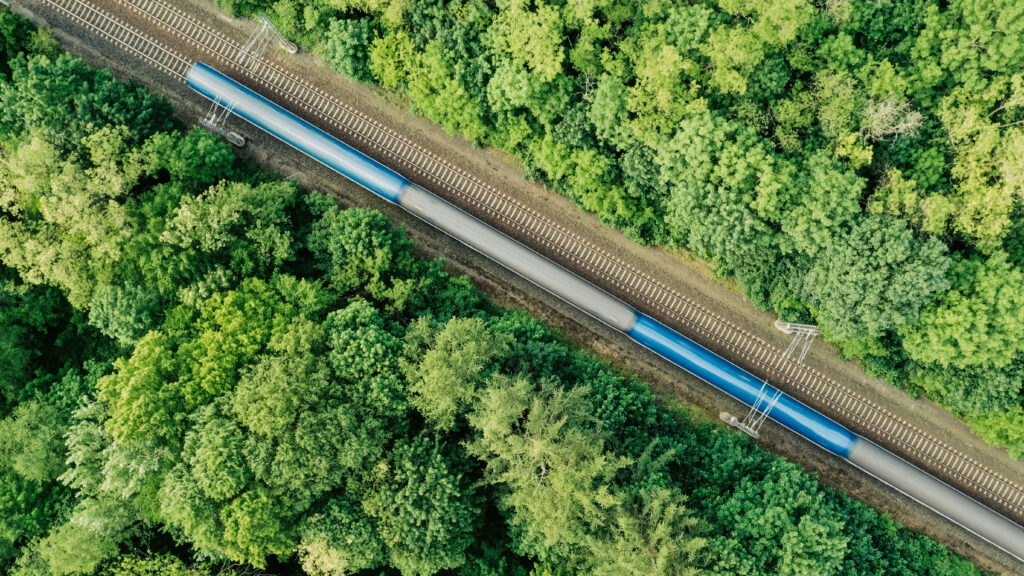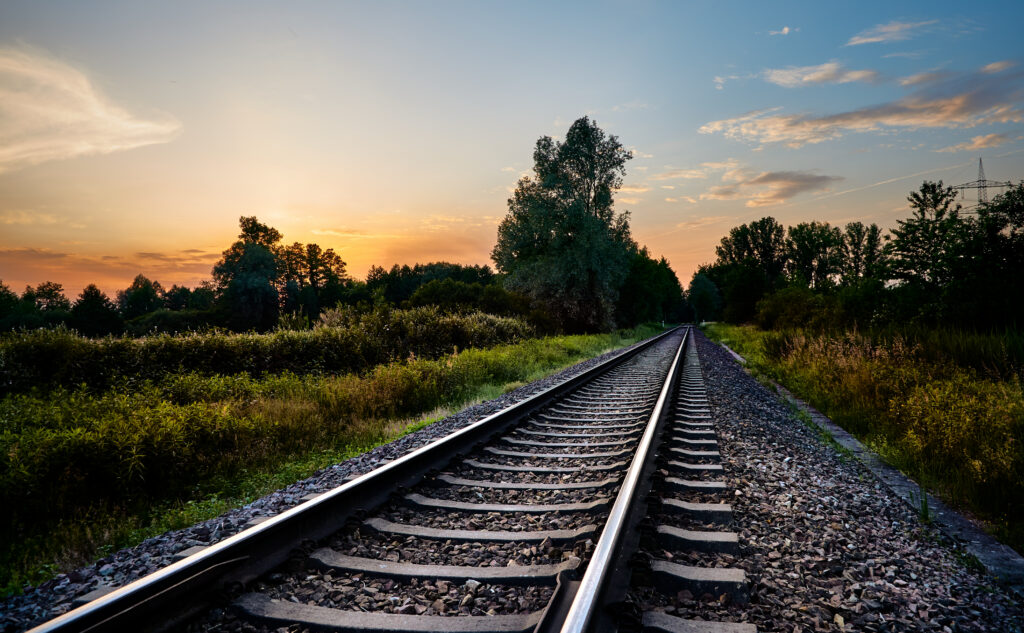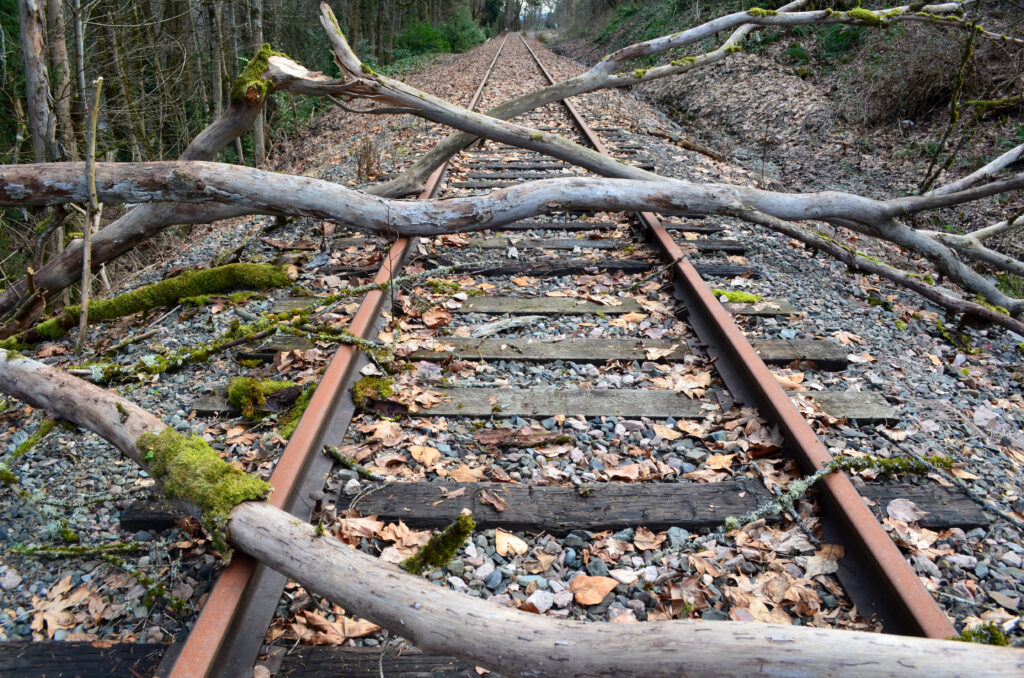RailStaff caught up with Dr Neil Strong who spoke to us about his work managing Network Rail’s real estate, the role of new technology, and the increasing impact of climate change.
Thanks for joining us, Neil. To begin, could you give us an overview of your role and the importance of your work?
My role is biodiversity strategy manager, and I sit within the environment and sustainability team in the Technical Authority level. After completing a bachelor’s degree in forestry and ecology and a PhD in Mycology / Forestry, I’ve been with Network Rail since 2001 in a number of positions.
I started off primarily in the vegetation management side of things, looking at the standards that we use for managing vegetation and, although they’ve been adapted and updated over the past 20 years, I helped to establish the standards we have in place today.
My role is primarily about managing Network Rail’s estate – that long, thin line of around 50,000 hectares across the country. Parallel to that is the matter of making sure we can run trains safely and efficiently but doing it in such a way so that we can also meet our environmental obligations, abide by legislation, and meet the challenges we face, including those from our seven million neighbours over the fence.
Ultimately, our role is to manage and maintain the structures that give us the safety and visibility our staff and passengers need, and at the same time maintain what is essentially a relatively undisturbed habitat for a whole host of plants and animals of which we are the custodian.
When we talk about vegetation management, what types of techniques and technologies are Network Rail’s teams using today?
Starting on the ground, we have teams across the network who are still out on a daily basis, using hand tools and chainsaws to manage vegetation. We still use traditional manual labour to cut back vegetation and get it out of the way of our lines, and the basic technologies haven’t changed much over the past 20 years.

In terms of bigger machinery, since I’ve been working in the railway, we’ve increasingly moved towards remote controlled machines. One example is the chippers that we now use. These are completely remote controlled, making the job a lot safer for their operators.
The introduction of battery technology is dramatically helping with health & safety issues such hand-arm vibration. It’s also helping significantly in terms of accessibility and noise reduction. One of the main complaints we receive from the public is regarding noise levels, especially as the majority of the work that we do has to be carried out during the evenings or weekends to accommodate train movements. The last thing you want at 10 o‘clock on a Saturday morning is someone at the back of your garden using a chainsaw. Going forward, it’s likely that battery technology will improve to the point where our large machines are also electric or battery-powered, reducing the disturbance of the general public even further.
In terms of surveying, we have air operations teams who can provide good imagery using helicopters, and we have teams across the network who are able to use drones to get similar imagery. We have fixed wing aircraft, which use LiDAR technology, allowing us to gather information on the health and condition of trees, and assess more accurately whether those in poor health are a danger to the line. In the case of particular diseases, such as Ash dieback, we can also use this data to start modelling where we need to take action and can then direct our teams on the ground to particular areas.
We’re also looking at new techniques involving AI, which can help us better predict where vegetation may encroach on the line or block signals in future, and plan to carry out work before this starts to cause problems.
What threat does vegetation pose to structures on the railway, and how is this managed?
Vegetation is very good at growing in places it shouldn’t, and plants like buddleia are just doing on rail infrastructure exactly what they do in their natural habitats – growing out of rock faces and cliff faces. Unfortunately, they’re using our brickwork and ballasted area as a surrogate for these areas and that can be very damaging to infrastructure along the railway. One example is when roots get into brickwork and rockfaces and then expand, destabilising the structure (‘root-jacking’).
Network Rail carries out structural examinations and general vegetation examinations, so that our teams on the ground can understand what they’re dealing with and address these issues through scheduled work programmes before they start to cause a problem.
How we treat and manage vegetation is key to protecting against structural damage, and this is where technology comes into play again. We are currently looking at the use of drones to apply herbicides, which will help with access to hard-to-reach areas. One of the best examples where this would be useful is the huge retaining walls on the approach to Liverpool Lime Street Station. Treating the vegetation with herbicides is very difficult here due to overhead powerlines and trains regularly passing through. This technology will certainly help with access and help us minimise the damage that vegetation can cause.
We have the techniques and the technology to help us manage vegetation on the railways, and the inspection regimes in place to identify where vegetation is a problem and direct our teams to tackle it.
You mentioned how the work of your teams can cause friction with the general public. How big is this problem and how does Network Rail address this?

In 2018, there was a big review of Network Rail’s approach to vegetation management. This came after an article in the Guardian which suggested we were secretly felling trees. In reality, there were a couple of sites just north of London where there had been very poor communication with local people and the contractors had cleared a lot of vegetation that they didn’t need to. After questions in Parliament, Joe Johnson, who was Rail Minister at the time ordered a review of our approach to vegetation management across England and Wales, and also how we took account of local communities and biodiversity.
John Varley OBE was appointed chair of the review and spent 18 months looking at what we did, why we did it, and how. Among his recommendations were improving communications with communities and key stakeholders. As a result, we now spend a lot more time and resources, using a wider range of communication channels and tools, to inform the public of where and when we will be carrying out work, the purpose of the work, and how we’re going to protect the environment.
An example of this is sending out text messages and emails to residents when we’ll be working in their location to make them aware of our presence, but also to reassure them that the work is necessary, and that while it might not look pretty when we start, the end result will be improved safety for the public and rail staff, and an improved local area in terms of the environment and biodiversity.
All of this also ties into the technological progress we are seeing. The use of battery-powered tools and machines means we can now work in close proximity to our neighbours with as little disturbance as possible.
One cause for concern among the public is the use of pesticides. How are chemicals used to manage vegetation on the railway, and how do you ensure they are used responsibly?
We primarily use pesticides to keep the ballasted area of the railway clear. We have a number of trains that travel in circuits across the network every year, primarily to treat weeds and plant growth in the ballast. We do this for a few reasons. For example, the ballast is designed to be free draining, but once you have plants growing in there, that reduces this ability.
We also have plain line pattern recognition (PLPR) trains going up and down the network, using lasers and cameras to detect faulty track. If these can’t see the components of the track, we’re left with a very expensive train collecting images of weeds.
There are various ways of weeding the railway. You could ballast-clean the whole of the railway on an annual basis, but that would be rather expensive and not very efficient. The same can be said for hand weeding.
Chemical usage, when it is targeted and follows the manufacturers conditions and instructions, is the best and most efficient way to treat weeds on the railway. We’ve worked for years with manufacturers, the Environment Agency, and with environmental regulators to make sure that our approach to applying pesticides is the best it can be. We’re avoiding drift, targeting the areas that we spray, and we’re using the chemicals that have the best efficacy for getting rid of the weeds, but which have the least environmental impact.
The active ingredients that we’re using are agreed with the HSE and the Chemicals Research Directorate, as well as the Environment Agency. We have signed a spray agreement with the Environment Agency and Water UK, as well as SEPA in Scotland, and Natural Resources Wales. That document details the way that we monitor and manage where and how chemicals are sprayed, and where our spraying trains will turn off because they’re entering into abstraction areas – areas where water is taken out for human use.
So, we have all the right processes in place to ensure that we’re putting the right chemicals in the right place at the right time, and that that we’re not over-spraying.
Finally, the major issue we all face right now is climate change. How is this affecting the safe operation of the rail network and what steps are you taking to mitigate its impact?
Climate change is having so many impacts, including species movement, new pests and diseases, and severe weather events. When combined, all of these issues are causing a problem which is larger than the sum of its parts. For instance, species movement introduces new pests and diseases to an area. These then affect the health of the trees in that area, making them more likely to lose branches, or come down entirely, in the case of a severe weather event. Obviously, this increases the risk to trains and passengers on the network and causes disruption in the case that powerlines are brought down.

Warmer temperatures will increase growth rates, meaning that we’ll have more work to do as return rates will decrease. Ten years ago, if we’d cleared an area and cut all the trees back, we could have been confident that we wouldn’t need to return for another 10 years. We’re seeing now that growth rates, especially in the south-west of the country are rapidly increasing. It’s not an insurmountable problem, but we need to be aware of it and plan accordingly.
Increasing temperatures will affect the distribution of tree species across Britain. Beech, for instance is a south of England species, but temperature rises mean it is becoming suited to the North. This means that we are starting to see Beech trees in the south becoming awfully stressed as rainfall and water levels in the soil are not sufficient. When trees become stressed, they become unhealthy and susceptible to infection by fungi – even those that wouldn’t usually be problematic. With individual trees, this isn’t a huge problem, but when you have forests full of stressed trees, then we need to be more aware of the impact that could have. We’re seeing that dramatically with Ash Dieback disease. Around 16% of trees across the rail network are Ash, and we know that a lot of them are going to get Ash Dieback and we’re going to have to manage that.
A further complication with fungal disease such as Ash Dieback, and pests such as horse chestnut leafminer, is that they cause trees to drop their leaves. As these diseases become more common, we’re increasingly having to deal with leaf-fall-problems earlier in the year.
The increasing frequency of severe weather events is also having an impact, and that’s exacerbated by the way that many trees have evolved. What deciduous trees do very well is shed all of their leaves before winter. This is due to reduced water availability – water is primarily lost through leaves – and because, generally, we tend to see stronger storms during the winter months. If trees hold onto their leaves during this time, they are more susceptible to blowing over in the event of strong winds. However, we’re now seeing increasingly strong storms at a time when the trees haven’t shed their leaves, and we’re seeing more trees blowing over.
These are the many challenges that our teams on the ground are now having to work with. It’s not quite an apocalyptic scenario, but it increases the number of factors that our teams need to be aware of.
Lead image credit: Network Rail

